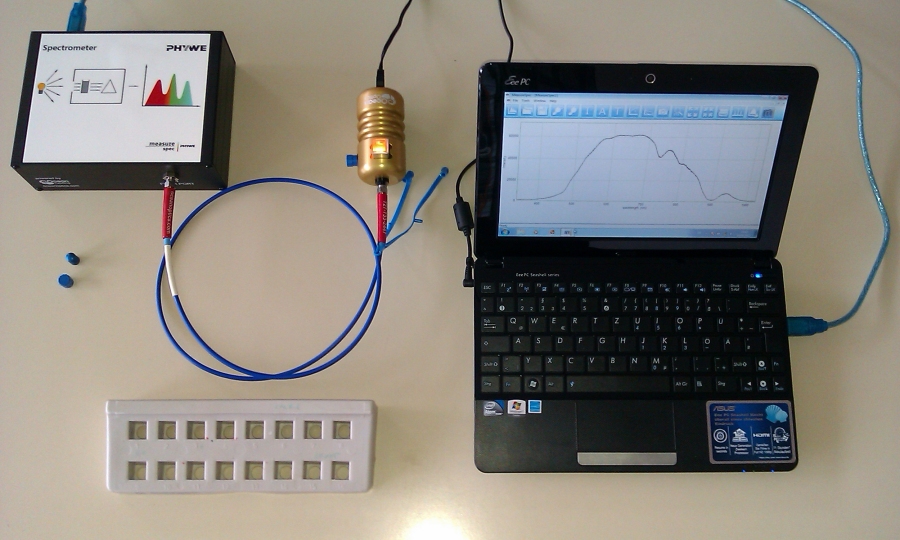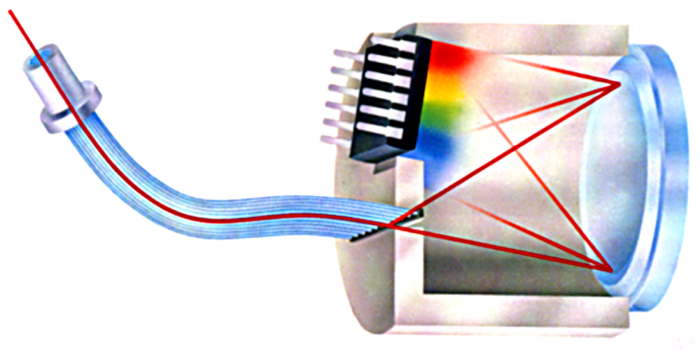Fiche 4.2 : Un photomètre à absorption pour l'enseignement à l'école (1/6)
Les composants
Un photomètre pour l'enseignement des sciences est disponible auprès d'une société de matériel d'enseignement des sciences. Il s'agit d'un système complet composé de tous les éléments nécessaires. Les différents éléments sont pour la plupart accessibles indépendamment les uns des autres, ce qui permet de comprendre facilement leur fonction. Par rapport aux photomètres de laboratoire, dont les composants sont cachés dans un boîtier fermé, ce photomètre éducatif permet d'expérimenter librement et même de modifier la configuration et l'alignement.

L'utilisation de polychromateurs présente un avantage particulier. Contrairement à un monochromateur, qui ne peut détecter la luminosité qu'à une seule longueur d'onde à l'aide d'un photodétecteur, un polychromateur utilise une matrice de détecteurs composée de nombreux éléments individuels. Le spectromètre utilisé à l'école possède une matrice de détecteurs composée de 2048 éléments ! Grâce à un logiciel d'exploitation confortable, des spectres presque continus de 340 à 1026 nm sont obtenus avec des distances d'environ 0,4 nm (dans le proche UV) et 0,3 nm (dans le proche IR).

Source: CARL ZEISS, Oberkochen.
La lumière d'examen est reliée à un faisceau de fibres de verre (en haut à gauche du graphique). L'une des fibres et la lumière qui passe sont représentées en rouge à titre d'exemple. Le faisceau de fibres est réassemblé d'une disposition circulaire à une disposition linéaire. De cette façon, elles ressemblent géométriquement à l'entrée du polychromateur à la fente d'entrée d'un monochromateur. L'élément en verre à droite porte un réseau optique pour la dispersion de la longueur d'onde. En même temps, l'élément en verre concave concentre la lumière de la fente d'entrée sur la matrice de détecteurs. Les éléments du réseau enregistrent ainsi de manière synchronisée le spectre de la lumière qui pénètre dans le faisceau de fibres de verre.
